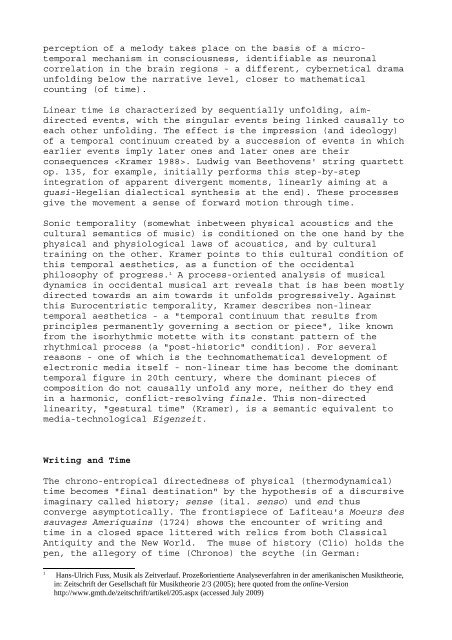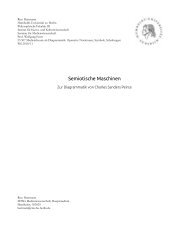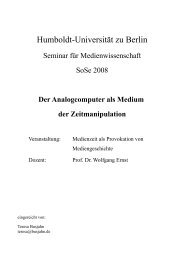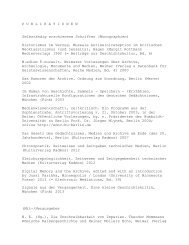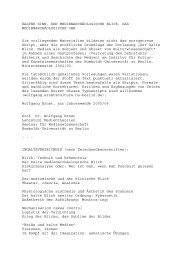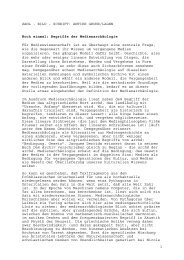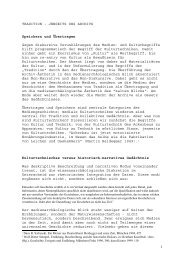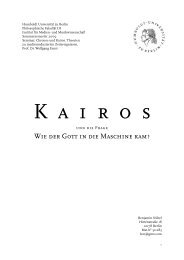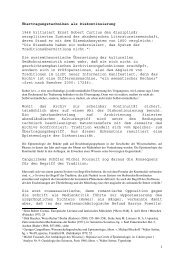"... ELSE LOOP FOREVER". THE UNTIMELINESS OF MEDIA In ...
"... ELSE LOOP FOREVER". THE UNTIMELINESS OF MEDIA In ...
"... ELSE LOOP FOREVER". THE UNTIMELINESS OF MEDIA In ...
- No tags were found...
You also want an ePaper? Increase the reach of your titles
YUMPU automatically turns print PDFs into web optimized ePapers that Google loves.
perception of a melody takes place on the basis of a microtemporalmechanism in consciousness, identifiable as neuronalcorrelation in the brain regions - a different, cybernetical dramaunfolding below the narrative level, closer to mathematicalcounting (of time).Linear time is characterized by sequentially unfolding, aimdirectedevents, with the singular events being linked causally toeach other unfolding. The effect is the impression (and ideology)of a temporal continuum created by a succession of events in whichearlier events imply later ones and later ones are theirconsequences . Ludwig van Beethovens' string quartettop. 135, for example, initially performs this step-by-stepintegration of apparent divergent moments, linearly aiming at aquasi-Hegelian dialectical synthesis at the end). These processesgive the movement a sense of forward motion through time.Sonic temporality (somewhat inbetween physical acoustics and thecultural semantics of music) is conditioned on the one hand by thephysical and physiological laws of acoustics, and by culturaltraining on the other. Kramer points to this cultural condition ofthis temporal aesthetics, as a function of the occidentalphilosophy of progress. 1 A process-oriented analysis of musicaldynamics in occidental musical art reveals that is has been mostlydirected towards an aim towards it unfolds progressively. Againstthis Eurocentristic temporality, Kramer describes non-lineartemporal aesthetics - a "temporal continuum that results fromprinciples permanently governing a section or piece", like knownfrom the isorhythmic motette with its constant pattern of therhythmical process (a "post-historic" condition). For severalreasons - one of which is the technomathematical development ofelectronic media itself - non-linear time has become the dominanttemporal figure in 20th century, where the dominant pieces ofcomposition do not causally unfold any more, neither do they endin a harmonic, conflict-resolving finale. This non-directedlinearity, "gestural time" (Kramer), is a semantic equivalent tomedia-technological Eigenzeit.Writing and TimeThe chrono-entropical directedness of physical (thermodynamical)time becomes "final destination" by the hypothesis of a discursiveimaginary called history; sense (ital. senso) und end thusconverge asymptotically. The frontispiece of Lafiteau's Moeurs dessauvages Ameriquains (1724) shows the encounter of writing andtime in a closed space littered with relics from both ClassicalAntiquity and the New World. The muse of history (Clio) holds thepen, the allegory of time (Chronos) the scythe (in German:1Hans-Ulrich Fuss, Musik als Zeitverlauf. Prozeßorientierte Analyseverfahren in der amerikanischen Musiktheorie,in: Zeitschrift der Gesellschaft für Musiktheorie 2/3 (2005); here quoted from the online-Versionhttp://www.gmth.de/zeitschrift/artikel/205.aspx (accessed July 2009)


